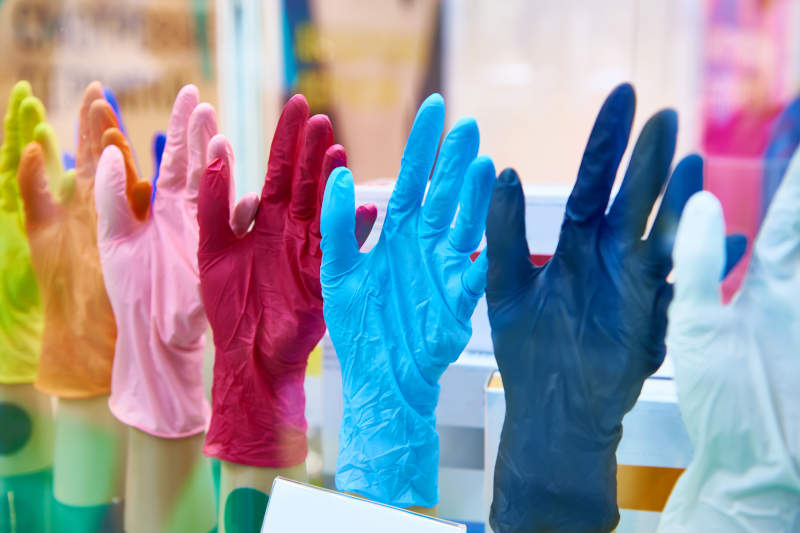How Nitrile Glove Colors Affect Quality and Performance


How Nitrile Glove Colors Affect Quality and Performance
When choosing nitrile gloves for various applications, you might wonder if the color of the gloves has any impact on their quality. Nitrile gloves come in a range of colors, including blue, black, purple, green, and orange, each catering to different industries and preferences. Let’s explore this question in detail.
Does Color Affect the Quality of Nitrile Gloves?
1. Material and Manufacturing:
Consistent Quality: The base material of nitrile gloves, is the same regardless of color of the nitrile gloves. The most common colors for nitrile gloves are black nitrile gloves, blue nitrile gloves, and orange nitrile gloves. Nitrile, a synthetic rubber, provides excellent chemical resistance, durability, and flexibility. The color is added to the raw material mix during the manufacturing process and does not impact these inherent qualities.
Manufacturing Process: The quality of nitrile gloves is determined by the manufacturing process, quality control standards, quality of the raw materials and the formulation of the nitrile compound. The quality of the pigment matters here, not the color of the dye.
Pigment Quality: How It Affects Nitrile Gloves
1. Pigment Purity:
Impact on Chemical Resistance and Durability: High-quality, pure pigments ensure that the gloves maintain their chemical resistance and durability. Cheaper, impure pigments might introduce contaminants that can weaken the nitrile material, making the gloves less resistant to chemicals and more prone to tearing.
Avoiding Contaminants: Pure pigments do not introduce foreign substances that could degrade the nitrile compound. This is crucial for maintaining the integrity and protective qualities of the gloves.
2. Pigment Shape:
Impact on Rubber Quality: The shape of pigment particles can also affect the quality of nitrile gloves. Irregularly shaped or coarse pigment particles can create weak points in the rubber, leading to reduced elasticity and strength. High-quality pigments with uniform and smooth particles help maintain the structural integrity of the gloves.
Smooth Integration: Pigments with smooth, well-defined shapes integrate more seamlessly into the nitrile compound, ensuring a consistent and robust glove material. This enhances the glove's overall performance and longevity.
3. Potential Impurities:
Effect on Performance: Lower quality pigments might contain impurities that can affect the glove’s performance and also your health. These impurities can react with the nitrile material, reducing its effectiveness against chemicals and physical stress.
Health Risks: Impurities in pigments can increase the risk of allergic reactions or skin irritation. High-quality pigments are less likely to contain substances that could cause adverse skin reactions, ensuring the gloves are safe for prolonged use.
Conclusion
The color of nitrile gloves does not inherently affect their quality. The durability, chemical resistance, and flexibility of nitrile gloves are consistent across different colors, as these attributes are determined by the nitrile material and manufacturing process. However, the quality of pigments used in coloring the gloves can play a significant role. High-quality, pure pigments ensure that the gloves maintain their desired properties without introducing impurities that could affect performance and your health.
When selecting nitrile gloves, consider the intended application, visibility requirements, and professional appearance rather than focusing solely on color. By understanding these factors you can choose the best nitrile gloves to meet your needs without compromising on quality.
For more insights and to explore our range of high-quality nitrile gloves.
